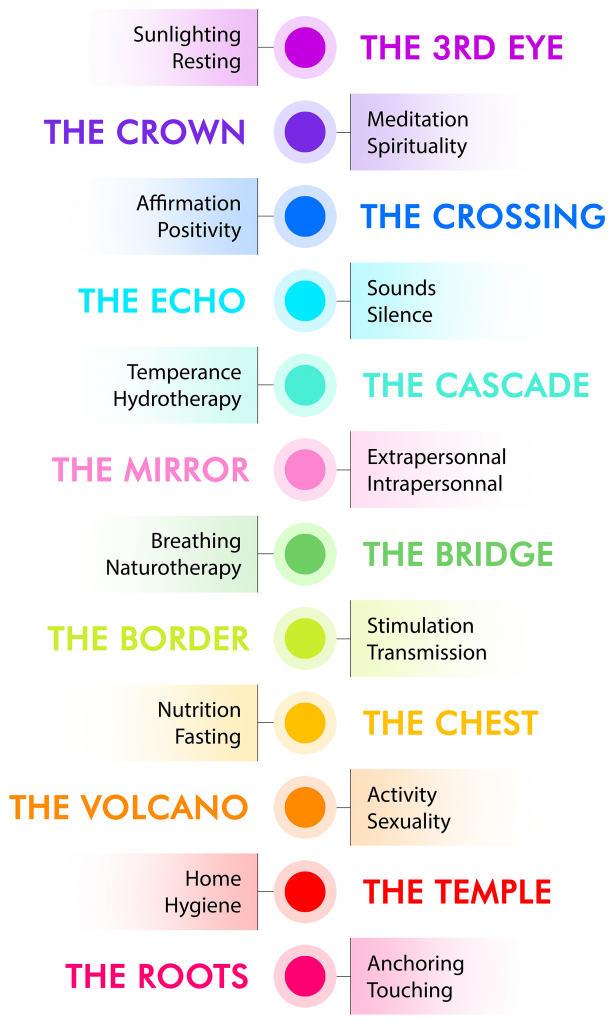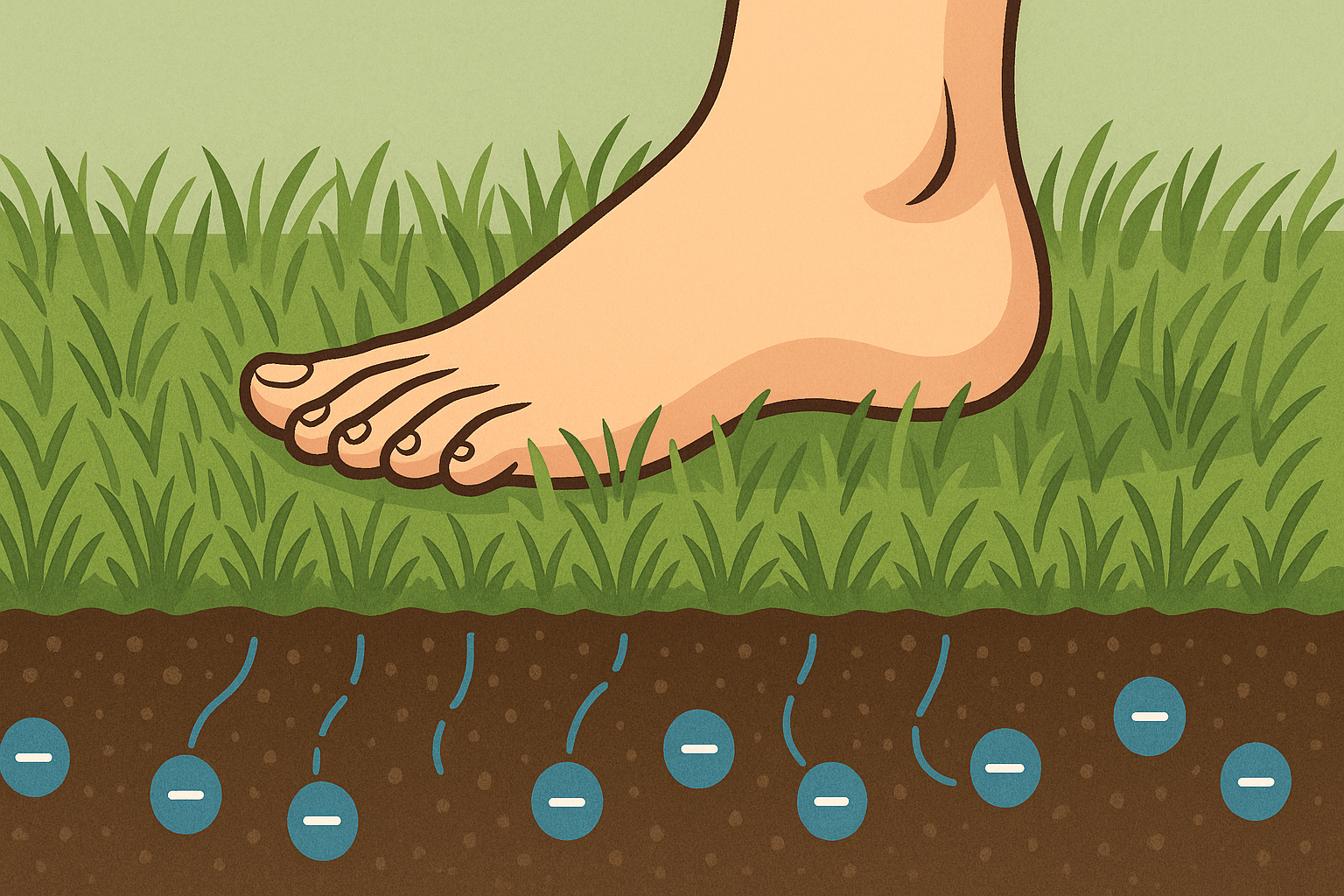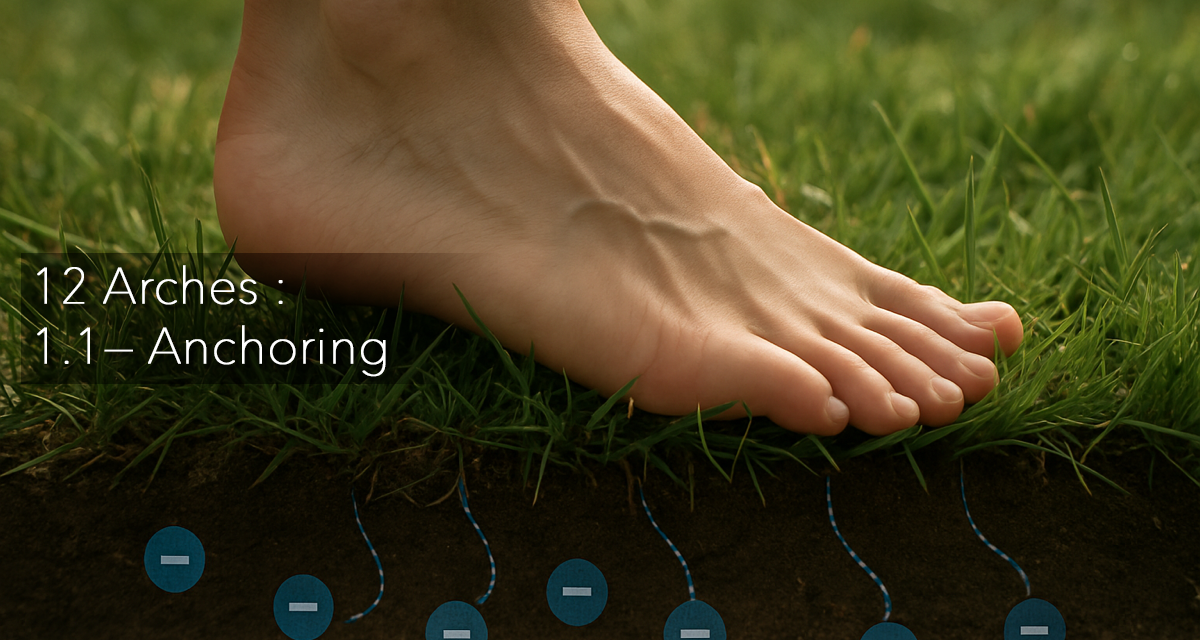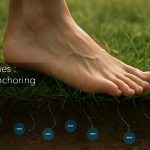In this article, we will talk about health and the simple rules proposed by the “12 Arches” program from the Academy Of Mana. These rules will be explored gradually through various articles dedicated to this subject.
There are several major enemies to our health, but the three main ones are oxidation, chronic inflammation, and stress.
To ensure a long and healthy life, we must meet a few essential criteria to avoid these major enemies. These criteria will allow our cells to regulate themselves properly, our DNA to be preserved, our brains and cognitive functions to maintain their full potential for as long as possible, and offer our descendants, to whom we will pass on our genes, the best possible legacy.
To provide our body with these favorable life conditions, the program is structured around 12 Arches, as its name suggests. These 12 Arches represent 12 essential points of our existence, functioning, and life goals, each based on two opposing or complementary pillars. In total, throughout the upcoming articles, I will present you with 24 activities, each holding a key to good health.
The path of the 12 Arches is as follows:

It starts from the feet and goes up to the head, beginning with the first Arch called “The Roots.” This Arch rests on two pillars: Anchoring and Touching.
In this article, let’s focus on the first pillar: Anchoring.
Our feet are an incredible concentration of nerve endings, sending millions of pieces of information every second to our brain about the ground we walk on, the stability of the surface beneath us, our movement or balance, and thus our surrounding space.
As we walk, our feet rub against the ground and, through this friction, produce an exchange. Let’s explain it as simply as possible.
If you have taken an Astronomy 101 course, you have learned about the “growth of complexity,” which should no longer be a mystery to you. If not, here’s a quick summary: matter is made up of molecules, which are composed of atoms, themselves made of elementary particles. Among these particles are “electrons,” a word likely familiar to you because of its link to “electricity.” And this is no coincidence, since electrons are the fundamental components of electricity.
Our body is a machine that produces electricity. Through our nerves, neurons, and the entire set of biochemical activities in our nervous system, we generate electricity every second — until the very last “spark” at the end of our life, when the brain triggers billions of electrical and photonic reactions before “turning off the lights.”
However, not all electricity is the same. To understand this, we must talk about ions. Ions consist of two elements: electrons and protons. In an ion, if there are more electrons than protons, the ion is called “negative.” If there are fewer electrons than protons, it is a “positive” ion.
What’s misleading is that these terms refer to the ion’s charge, not its effect on our health. In fact, a positive ion promotes:
-
Fatigue
-
Stress
-
Respiratory irritations
-
Sleep disorders
-
Inflammation
They disrupt our metabolism because they “steal” electrons from healthy cells, weakening their function and harming our health.
On the other hand, negative ions, which have enough electrons not to rob them from our body, will:
-
Improve blood oxygenation
-
Reduce stress
-
Promote better sleep
-
Boost mood
-
Clean the air by trapping dust, bacteria, and pollutants
They supply excess electrons, helping to neutralize free radicals (we’ll discuss this later) and restoring a better bioelectrical balance.
We can thus understand that “positive” ions have “negative” effects on our bodies, whereas “negative” ions have “positive” effects.
Therefore, we need to charge our bodies with negative ions and limit exposure to positive ones.
Unfortunately, positive ions are everywhere around us. They are mainly produced by:
-
Pollution (cars, factories, city air) → exhaust gases generate positive ions
-
Air conditioners, heaters, neon lights, and halogens → by drying out the air, they increase the number of positive ions; in general, all dry heat sources are full of positive ions (we will discuss this further when talking about hydrotherapy)
-
Electronic screens (computers, phones, televisions) → they emit positive ions
-
Synthetic materials (carpets, plastics, clothing) → they create positive charges through friction (static electricity)
As you can see, many of these factors are omnipresent in our lives, especially if you live in urban areas. It is therefore crucial to counterbalance this. Of course, living in the countryside, avoiding air conditioning, humidifying the air, reducing screen exposure, using non-halogen lighting, and favoring nudity are obvious good habits… but not always possible! So here’s a simple tip.
A fantastic source of negative ions is… the Earth itself! The raw soil of our planet. And to get rid of the harmful effects of positive ions and charge ourselves with free electrons propagating through the ground, all we need to do is… walk barefoot on grass, sand, or soil. Obviously, floor coverings and asphalt are of no help. We need raw earth!

Here’s a very simple example to show you the incredible effect of this. Have you ever noticed how children coming out of school are like “electric batteries,” restless, overexcited, noisy, sometimes angry? Not surprising, considering they spend hours crammed together under neon or halogen lights, near computers or tablets, in overheated and poorly ventilated classrooms, wearing synthetic clothing and sports shoes. When they get home, take off their shoes and let them run barefoot in the grass for ten or fifteen minutes. You’ll see a radical change in their mood as they calm down. Simply because they absorb free electrons from the soil through the friction of their feet on the grass or earth, thus restoring their electrical balance.
If you suffer from mood swings, sadness, melancholy, sleep troubles, anger, joint pains, or even breathing difficulties, do the same — ideally in a forest.
It will also help you relearn how to walk properly. How should we walk? What movement should the foot make while walking? If your answer is “heel first, then the sole, then the forefoot,” you have fallen into the trap caused by wearing shoes. A barefoot foot in nature never puts down the heel first. If you walk barefoot in a forest, you will quickly feel it! Because stepping with the heel would also cause the midfoot to hit the ground — and the middle of the foot is extremely sensitive and fragile, with thin skin that is easy to injure.
Look at how babies spontaneously walk when they are learning to stand. Without being taught, they walk on their toes, like ballerinas. That’s how the foot should land when walking: only the front of the foot, propelled by the toes. The heel touches the ground only when stopping, when you are sure of where you are stepping.
So, everyone barefoot — and off to reconnect with the Earth!






